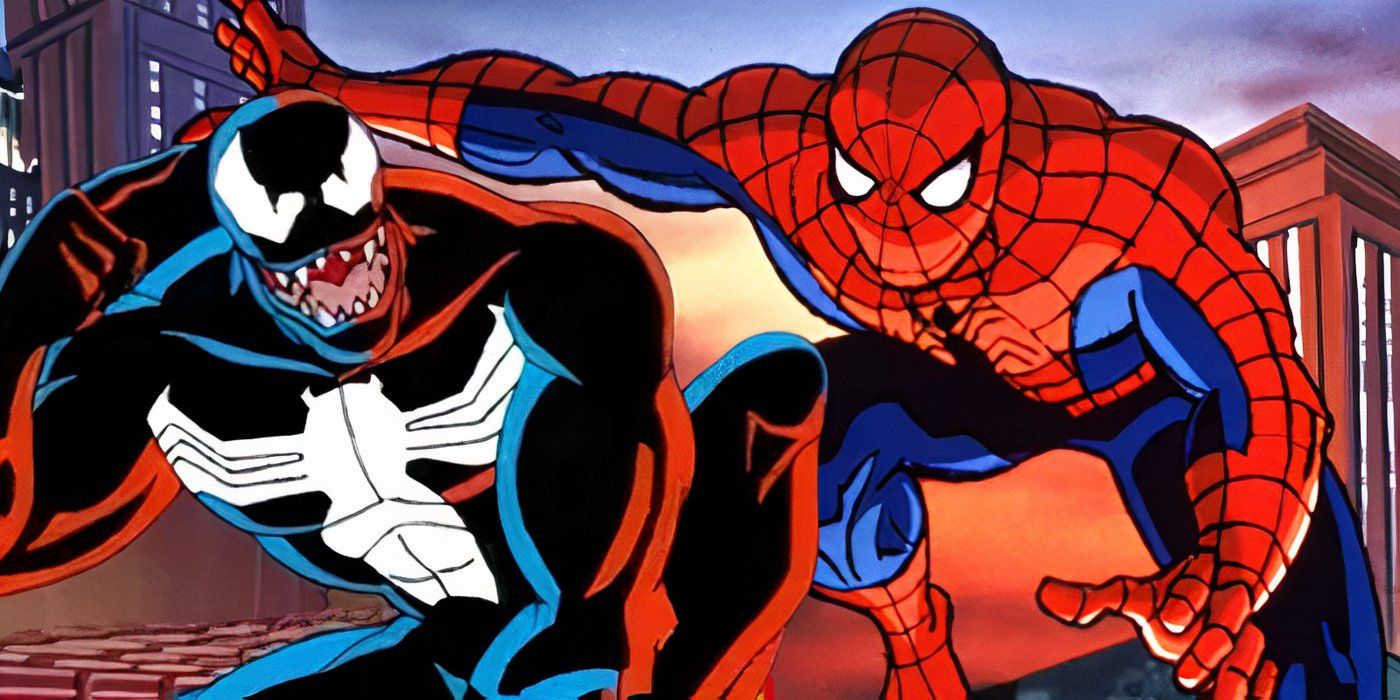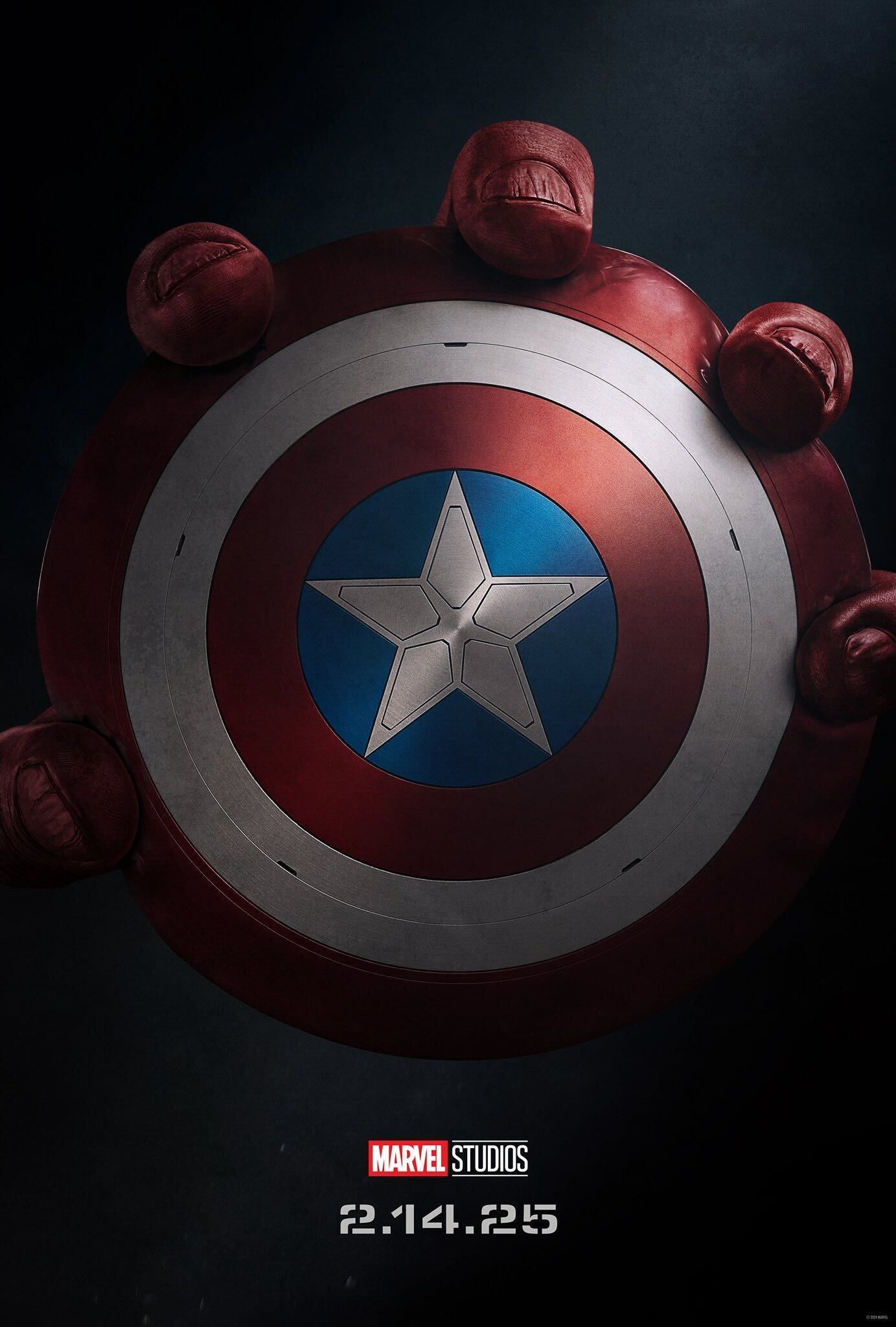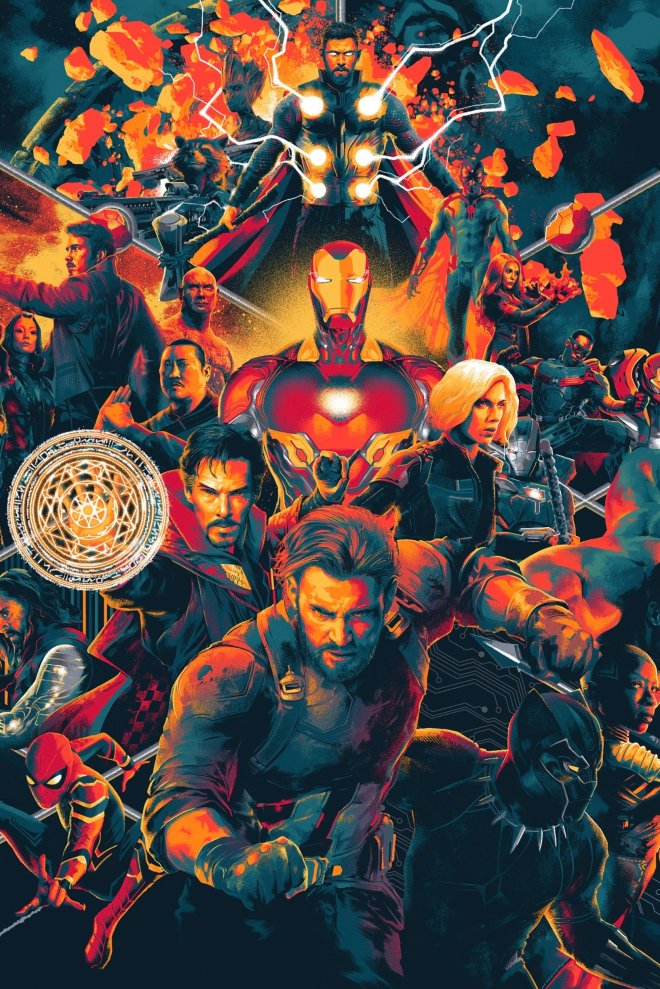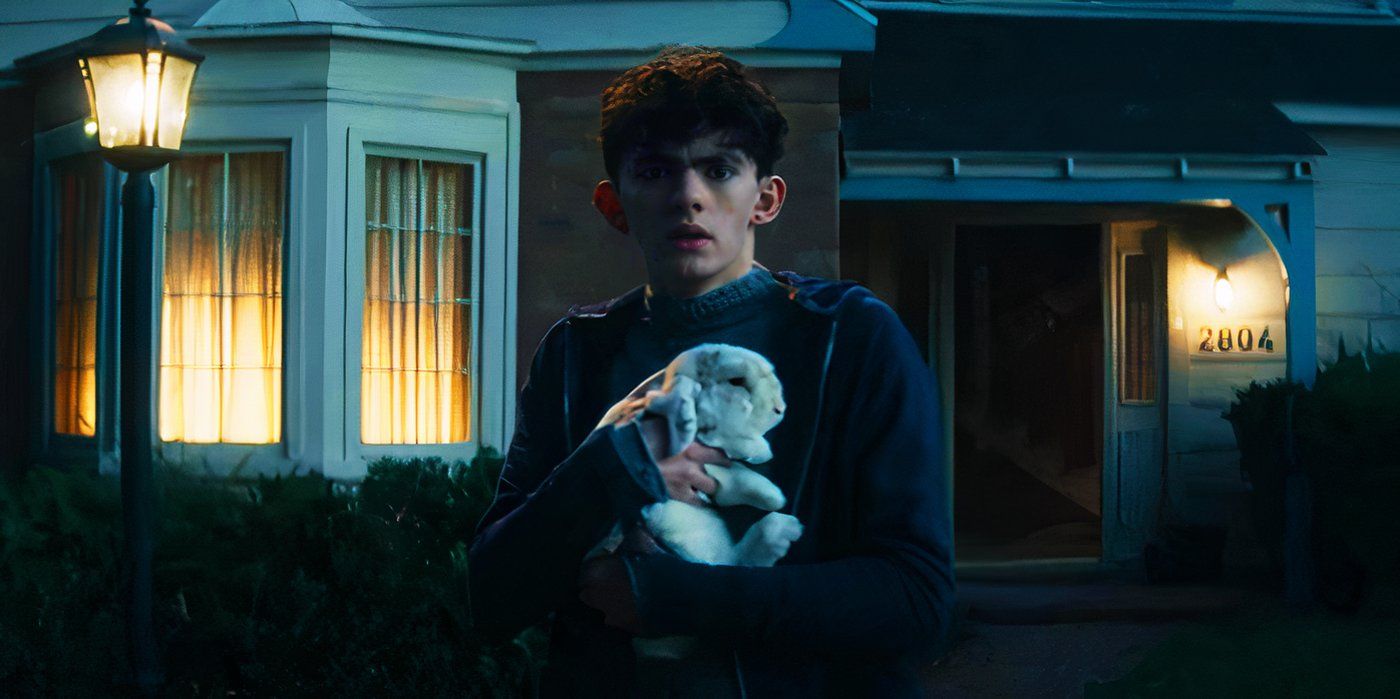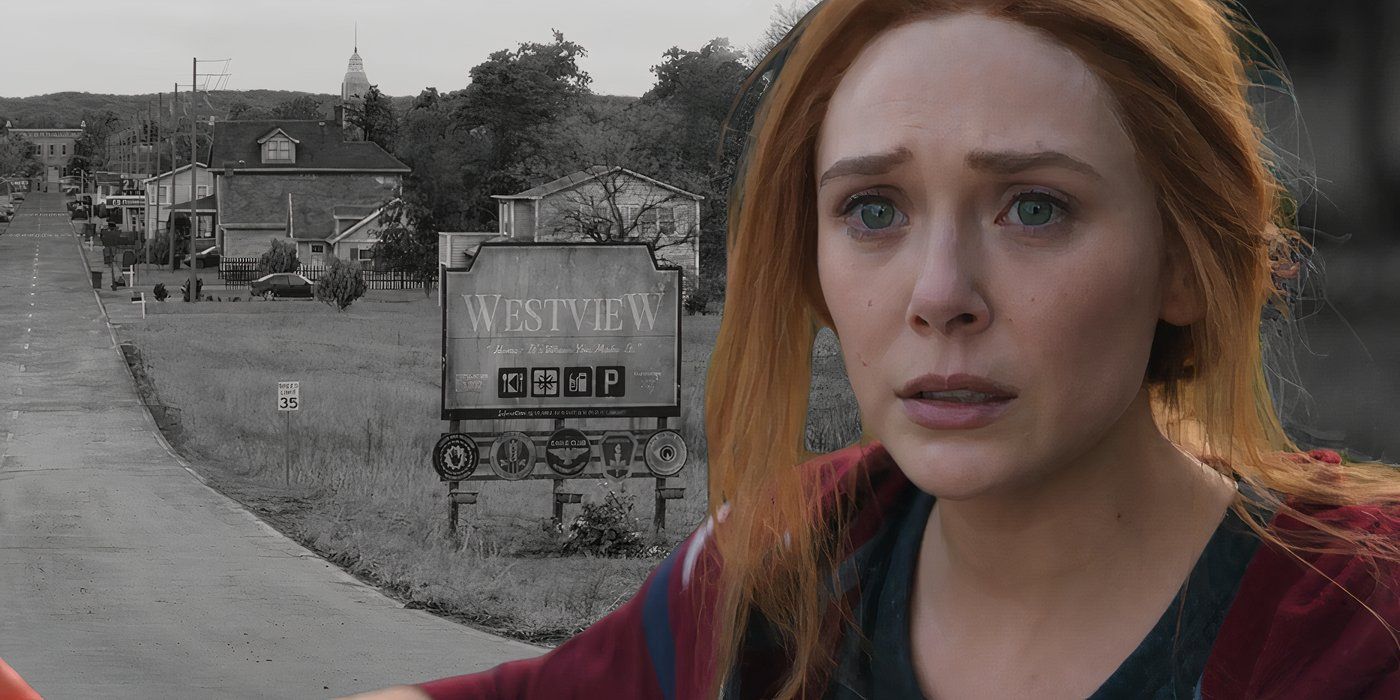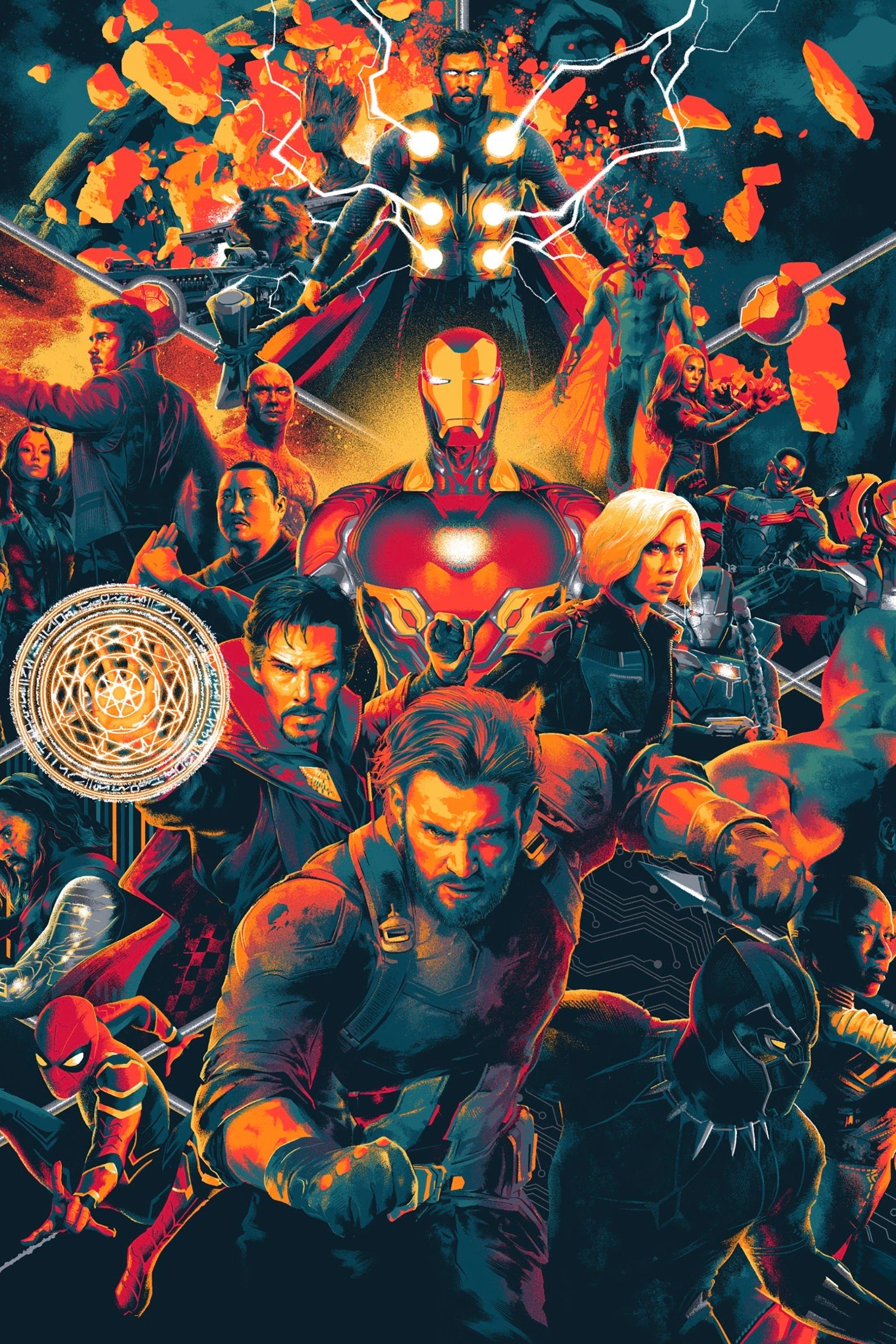10 Superpowers Marvel Villains Never Used In The MCU
The villains of the Marvel Cinematic Universe often pale in comparison to their comic counterparts in terms of power, lacking some of their most incredible abilities from the source material. The MCU has often been criticized for their supposed Marvel villain problem, frequently struggling to craft meaningful antagonists outside a handful of standout characters. One small aspect of this issue has been the overall power level of Marvel villains, which ranges from godly to laughably inconsequential.
Throughout the movies of the MCU, most Marvel villains don"t possess straight-up superpowers, with most relying on technology or meticulous planning to threaten heroes instead. In the rare instances they do have superhuman abilities, they typically start and stop with typical enhancements like super strength, super speed, and enhanced reflexes, indicative of the MCU"s many copies of Captain America"s super soldier serum. Meanwhile, the extended history of the comics allow for greater exploration of villainous might in Marvel stories.
10 The Hand of Glory Hela![]() The Goddess of Death, Hela is admittedly one of the most intimidating the MCU has ever shown off. Even the mighty Thor is unable to take her down by the end of his journey in Thor: Ragnarok, needing to rely on the rage of the fire giant Surtur to stand a chance. Though the MCU mostly focuses on Hela"s ability to summon and throw powerful blades of magic, it also takes the time to show off her earned title as the Goddess of Death with her usage of necromancy and death manipulation lifted straight from the comics.
The Goddess of Death, Hela is admittedly one of the most intimidating the MCU has ever shown off. Even the mighty Thor is unable to take her down by the end of his journey in Thor: Ragnarok, needing to rely on the rage of the fire giant Surtur to stand a chance. Though the MCU mostly focuses on Hela"s ability to summon and throw powerful blades of magic, it also takes the time to show off her earned title as the Goddess of Death with her usage of necromancy and death manipulation lifted straight from the comics.
However, movie Hela is missing one of the comic version"s most famous abilities, the so-called "Hand of Glory". This special technique occurs when Hela channels her latent magical energy into one of her hands, then using it to land a divinely devastating blow on a given target. The potency of this enhanced strike is enough to take down even deity-level beings like Thor and Odin.
9 Super Strength The Vulture![]() Super Strength is as generic as they come as a power in the MCU or the Marvel Comics as a whole, but the film series neglected to give the ability to one of the few characters that needed it most. The Vulture is one of Spider-Man"s flying villains who, in the comics, invents a special flight harness that allows him to fly via highly advanced physics. In addition to simple flight, The Vulture"s suit also grants him a degree of super strength and durability, making it more believable that he could step into the ring with Spider-Man"s enhanced physiology.
Super Strength is as generic as they come as a power in the MCU or the Marvel Comics as a whole, but the film series neglected to give the ability to one of the few characters that needed it most. The Vulture is one of Spider-Man"s flying villains who, in the comics, invents a special flight harness that allows him to fly via highly advanced physics. In addition to simple flight, The Vulture"s suit also grants him a degree of super strength and durability, making it more believable that he could step into the ring with Spider-Man"s enhanced physiology.
Meanwhile, the MCU completely re-invents The Vulture into being an overlooked blue-collar worker who turns to the illegal salvage and scale of alien technology following The Battle of New York in The Avengers. The flight suit and wings of Michael Keaton"s Vulture are indeed quite impressive, but don"t seem to grant him any real super strength or durability, beyond the cybernetic grip of his feet-mounted claws. In this way, the MCU Vulture is easy pickings for Spider-Man once he manages to stick to him, being limited by a normal level of human strength.
8 Energy Projection Thanos![]() Thanos is a tricky character to balance in a comic book adaptation, with his baseline power needing to be balanced against his godly strength after collecting the Infinity Stones. In the MCU, base Thanos is still quite impressive, being a world-conquering tyrant capable of throwing down with the Hulk and overpowering him with raw strength alone. After gathering the Infinity Stones, he obviously rises to an absurd level of power, threatening the entire universe with his will.
Thanos is a tricky character to balance in a comic book adaptation, with his baseline power needing to be balanced against his godly strength after collecting the Infinity Stones. In the MCU, base Thanos is still quite impressive, being a world-conquering tyrant capable of throwing down with the Hulk and overpowering him with raw strength alone. After gathering the Infinity Stones, he obviously rises to an absurd level of power, threatening the entire universe with his will.
In the MCU, Thanos is simply the last member of an extinct race, but in the comics, Thanos is actually an Eternal. Not only that, but Thanos has a rare gene mutation that grants him an even more staggering allowance of power, giving him impressive abilities like energy projection. On the same level of power as Captain Marvel, Thanos" comic counterpart is far stronger without the Infinity Stones, able to emit enough pure energy to blast entire space ships to pieces.
7 Solid Sound Body Ulysses Klaw![]() Ulysses Klaw, known as Klaue in the Marvel Cinematic Universe, has perhaps one of the biggest gulfs in power between his film and comic counterparts of any Marvel villain. In the films, Klaue is a simple mercenary with a prosthetic arm capable of splitting apart into a high-tech cannon, making him a dangerous criminal, but not a particularly threatening supervillain. While Klaw starts off in a similar place in the comics, he soon gains a dramatic leap in danger levels after an experimental device transforms his body into a sort of living sound wave.
Ulysses Klaw, known as Klaue in the Marvel Cinematic Universe, has perhaps one of the biggest gulfs in power between his film and comic counterparts of any Marvel villain. In the films, Klaue is a simple mercenary with a prosthetic arm capable of splitting apart into a high-tech cannon, making him a dangerous criminal, but not a particularly threatening supervillain. While Klaw starts off in a similar place in the comics, he soon gains a dramatic leap in danger levels after an experimental device transforms his body into a sort of living sound wave.
In this form, Klaw"s body is superhumanly strong, fast, and semi-intangible, though he"s able to interact with solid objects. This unique anatomy also allows Klaw to recover from nearly any injury, returning to consiousness as soon as his soundwave form is able to begin propagating again through a proper medium. With the use of a sonic converter, Klaw is also able to use his body in the comics to fire deadly sonic blasts. Killing off Klaue before he could begin this transformaiton was such a missed opportunity for the MCU, even Black Panther director Ryan Coogler regrets doing so.
6 The Encephalo-Ray Ultron![]() If there"s one Marvel villain with an undefined number of possibilities for powers, it"s Ultron. A computer program able to split his consciousness between multiple bodies, ironing out the details of the MCU Ultron"s powers is no easy thing to do. At the very least, his technomancy, army of drones, stockpile of weaponry, and vibranium body all make for an intimidating foe.
If there"s one Marvel villain with an undefined number of possibilities for powers, it"s Ultron. A computer program able to split his consciousness between multiple bodies, ironing out the details of the MCU Ultron"s powers is no easy thing to do. At the very least, his technomancy, army of drones, stockpile of weaponry, and vibranium body all make for an intimidating foe.
There is one power particularly unique to Ultron that the Marvel Cinematic Universe sadly neglected, however; His signature ranged attack, the Encephalo-Ray. This unique energy beam sends human opponents into a sort of near-death coma upon being struck by it, evidence of Ultron"s staggering technological prowess. It would"ve been interesting to see such a device used in Avengers: Age of Ultron, though Scarlet Witch"s mind control fulfills a similar narrative niche in the story.
5 Organic Body Manipulation Cassandra Nova![]() Of all the MCU"s villains, none were given quite as much free rein to use as many of their comic book powers as possible like Deadpool & Wolverine"s Cassandra Nova. The forgotten twin sister of Charles Xavier that somehow escaped the womb and survived as a bundle of cells before forming her own body, Cassandra Nova has many of Charles" same psychic gifts, on top of her own staggering mutant powers. Plenty of these are shown off in the movie, including telekinesis and a disturbing ability to phase her hands directly into the heads of others to read their mind.
Of all the MCU"s villains, none were given quite as much free rein to use as many of their comic book powers as possible like Deadpool & Wolverine"s Cassandra Nova. The forgotten twin sister of Charles Xavier that somehow escaped the womb and survived as a bundle of cells before forming her own body, Cassandra Nova has many of Charles" same psychic gifts, on top of her own staggering mutant powers. Plenty of these are shown off in the movie, including telekinesis and a disturbing ability to phase her hands directly into the heads of others to read their mind.
Unfortunately, Deadpool & Wolverine didn"t have time to show off all of Cassandra Nova"s potential, leaving out powers like her penchant for manipulating her own body. In more or less complete control of her own genome, Nova is able to shapeshift herself at will, appearing as anyone she wants to and even mimick their speech well enough to bypass sensitive voice recognition software. It"s rare that Cassandra needs to make use of her shapeshifting, but it would"ve been a great way for Deadpool & Wolverine to squeeze in more cameos than it already does.
4 The Traditional Rings The Mandarin![]() The Mandarin was another character to be quite re-invented by the Marvel Cinematic Universe. Though the concept of The Mandarin was first introduced in Iron Man 3, he doesn"t fully enter the picture himself until Shang-Chi and the Legend of the Ten Rings, which promised the appearance of the titular Rings of Power, The Mandarin"s signature magical weapons. However, the way the rings worked in the MCU is quite different from The Mandarin"s comic counterparts.
The Mandarin was another character to be quite re-invented by the Marvel Cinematic Universe. Though the concept of The Mandarin was first introduced in Iron Man 3, he doesn"t fully enter the picture himself until Shang-Chi and the Legend of the Ten Rings, which promised the appearance of the titular Rings of Power, The Mandarin"s signature magical weapons. However, the way the rings worked in the MCU is quite different from The Mandarin"s comic counterparts.
In the film, the Rings of Power are a set of identical rings bound together by energy, typically worn on the wrists and forearms as they"re wide enough to do so. Meanwhile, The Mandarin"s rings in the comics are ten literal pieces of jewelry, each worn on one of his fingers. In addition to having their own semblance of sentience, each ring has its own name, and grants The Mandarin a different unique power. These powers include a frost ray, darkness generation, blasts of lighting, wind manipulation, and even psychic powers.
3 Slowed Aging Baron Zemo![]() Despite his status as one of the Avengers most successful villains, Baron Zemo doesn"t have any actual powers to call his own. Seeking revenge for the deaths of his family, Zemo instead uses his powers of deception and manipulation in order to get the superhero team to destroy each other for him, essentially succeeding with the team fractured by the end of Captain America: Civil War. Dangerous though he may be, Zemo isn"t a threat in a physical fight, being more of a mastermind type of villain.
Despite his status as one of the Avengers most successful villains, Baron Zemo doesn"t have any actual powers to call his own. Seeking revenge for the deaths of his family, Zemo instead uses his powers of deception and manipulation in order to get the superhero team to destroy each other for him, essentially succeeding with the team fractured by the end of Captain America: Civil War. Dangerous though he may be, Zemo isn"t a threat in a physical fight, being more of a mastermind type of villain.
This is mostly true in the comics as well, with one glaring exception. Thanks to a mysterious concoction known as the Compound X serum, also used by Zemo"s predecessor and father, Zemo is able to slow his aging to an indefinite degree, being functionally immortal as far as natural human death is concerned. This longevity allowed him to persist into the modern day as a villain despite being one of Captain America"s original foes in World War II before he went into the ice.
2 The Divine Symbiote Erik Killmonger![]() For the most part, Killmonger is quite faithfully adapted into the MCU in terms of powers. Ingesting the mystical heart-shaped herb of Wakandan fame, expat Erik Killmonger gains all the same powers as T"Challa, The Black Panther, assuming his place as the ruler of the fictitious African nation. Following his death in the comics, Killmonger goes on quite an incredible journey of revival that gives him a unique new powerset.
For the most part, Killmonger is quite faithfully adapted into the MCU in terms of powers. Ingesting the mystical heart-shaped herb of Wakandan fame, expat Erik Killmonger gains all the same powers as T"Challa, The Black Panther, assuming his place as the ruler of the fictitious African nation. Following his death in the comics, Killmonger goes on quite an incredible journey of revival that gives him a unique new powerset.
Similar to the likes of Venom or Carnage, Erik Killmonger becomes host to a parasitic symbiote in the comics, being brought back to life thanks to the intervention of the divine symbiote of former Emperor N"Jadaka. This experience gave Killmonger a sleek new costume that combined the likes of Venom and Black Panther, as well as a host of fantastical new abilities. These included shapeshifting, matter manipulation, magical portal creation, and the ability to raise an entire army of clones known as The Joined. It"d be fascinating to see the MCU revive Killmonger with this premise.
1 Expert-Level Cooking Skills Taskmaster![]() In the comics, Taskmaster is an entirely different character than the MCU"s version. Other than having similar powers of combat mimicry, the comics Taskmaster isn"t Antonia Dreykov, born of the Black Widow program. Instead, the identity of Taskmaster belongs to the wisecracking villain (and later anti-hero) Anthony Masters, whose natural affinity for photographic recall provides his powers rather than cybernetic enhancements a la the MCU version.
In the comics, Taskmaster is an entirely different character than the MCU"s version. Other than having similar powers of combat mimicry, the comics Taskmaster isn"t Antonia Dreykov, born of the Black Widow program. Instead, the identity of Taskmaster belongs to the wisecracking villain (and later anti-hero) Anthony Masters, whose natural affinity for photographic recall provides his powers rather than cybernetic enhancements a la the MCU version.
Masters doesn"t only use his ability to unerringly mimic body movements just by seeing them for combat alone, indulging in his unique gifts for more trivial pursuits at times. One of these included some master-level cooking skills he was able to pick up simply by watching Food Network, using them to impress a date. It would be incredible to see more Marvel Cinematic Universe villains utilize their powers in more hilariously practical ways such as this.
Upcoming MCU Movies![]() Captain America: Brave New World
Captain America: Brave New World
Release Date February 14, 2025![]() Thunderbolts*
Thunderbolts*
Release Date May 2, 2025![]() The Fantastic Four: First Steps (2025)
The Fantastic Four: First Steps (2025)
Release Date July 25, 2025![]() Blade (2025)
Blade (2025)
Release Date November 7, 2025![]() Avengers: Doomsday
Avengers: Doomsday
Release Date May 1, 2026![]() Avengers: Secret Wars
Avengers: Secret Wars
Release Date May 7, 2027
[圖擷取自網路,如有疑問請私訊]
Throughout the movies of the MCU, most Marvel villains don"t possess straight-up superpowers, with most relying on technology or meticulous planning to threaten heroes instead. In the rare instances they do have superhuman abilities, they typically start and stop with typical enhancements like super strength, super speed, and enhanced reflexes, indicative of the MCU"s many copies of Captain America"s super soldier serum. Meanwhile, the extended history of the comics allow for greater exploration of villainous might in Marvel stories.
10 The Hand of Glory Hela
 The Goddess of Death, Hela is admittedly one of the most intimidating the MCU has ever shown off. Even the mighty Thor is unable to take her down by the end of his journey in Thor: Ragnarok, needing to rely on the rage of the fire giant Surtur to stand a chance. Though the MCU mostly focuses on Hela"s ability to summon and throw powerful blades of magic, it also takes the time to show off her earned title as the Goddess of Death with her usage of necromancy and death manipulation lifted straight from the comics.
The Goddess of Death, Hela is admittedly one of the most intimidating the MCU has ever shown off. Even the mighty Thor is unable to take her down by the end of his journey in Thor: Ragnarok, needing to rely on the rage of the fire giant Surtur to stand a chance. Though the MCU mostly focuses on Hela"s ability to summon and throw powerful blades of magic, it also takes the time to show off her earned title as the Goddess of Death with her usage of necromancy and death manipulation lifted straight from the comics.However, movie Hela is missing one of the comic version"s most famous abilities, the so-called "Hand of Glory". This special technique occurs when Hela channels her latent magical energy into one of her hands, then using it to land a divinely devastating blow on a given target. The potency of this enhanced strike is enough to take down even deity-level beings like Thor and Odin.
9 Super Strength The Vulture
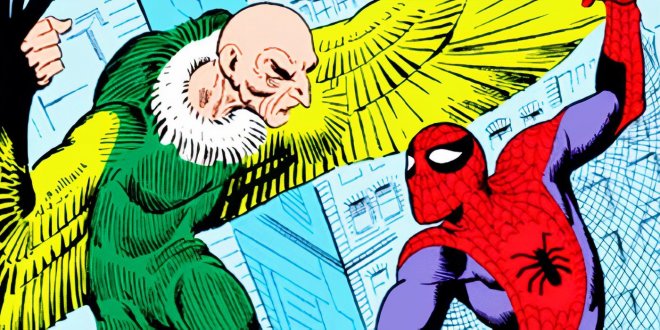 Super Strength is as generic as they come as a power in the MCU or the Marvel Comics as a whole, but the film series neglected to give the ability to one of the few characters that needed it most. The Vulture is one of Spider-Man"s flying villains who, in the comics, invents a special flight harness that allows him to fly via highly advanced physics. In addition to simple flight, The Vulture"s suit also grants him a degree of super strength and durability, making it more believable that he could step into the ring with Spider-Man"s enhanced physiology.
Super Strength is as generic as they come as a power in the MCU or the Marvel Comics as a whole, but the film series neglected to give the ability to one of the few characters that needed it most. The Vulture is one of Spider-Man"s flying villains who, in the comics, invents a special flight harness that allows him to fly via highly advanced physics. In addition to simple flight, The Vulture"s suit also grants him a degree of super strength and durability, making it more believable that he could step into the ring with Spider-Man"s enhanced physiology. Meanwhile, the MCU completely re-invents The Vulture into being an overlooked blue-collar worker who turns to the illegal salvage and scale of alien technology following The Battle of New York in The Avengers. The flight suit and wings of Michael Keaton"s Vulture are indeed quite impressive, but don"t seem to grant him any real super strength or durability, beyond the cybernetic grip of his feet-mounted claws. In this way, the MCU Vulture is easy pickings for Spider-Man once he manages to stick to him, being limited by a normal level of human strength.
8 Energy Projection Thanos
 Thanos is a tricky character to balance in a comic book adaptation, with his baseline power needing to be balanced against his godly strength after collecting the Infinity Stones. In the MCU, base Thanos is still quite impressive, being a world-conquering tyrant capable of throwing down with the Hulk and overpowering him with raw strength alone. After gathering the Infinity Stones, he obviously rises to an absurd level of power, threatening the entire universe with his will.
Thanos is a tricky character to balance in a comic book adaptation, with his baseline power needing to be balanced against his godly strength after collecting the Infinity Stones. In the MCU, base Thanos is still quite impressive, being a world-conquering tyrant capable of throwing down with the Hulk and overpowering him with raw strength alone. After gathering the Infinity Stones, he obviously rises to an absurd level of power, threatening the entire universe with his will.In the MCU, Thanos is simply the last member of an extinct race, but in the comics, Thanos is actually an Eternal. Not only that, but Thanos has a rare gene mutation that grants him an even more staggering allowance of power, giving him impressive abilities like energy projection. On the same level of power as Captain Marvel, Thanos" comic counterpart is far stronger without the Infinity Stones, able to emit enough pure energy to blast entire space ships to pieces.
7 Solid Sound Body Ulysses Klaw
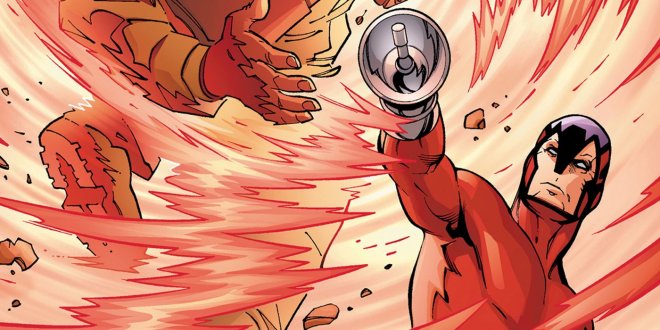 Ulysses Klaw, known as Klaue in the Marvel Cinematic Universe, has perhaps one of the biggest gulfs in power between his film and comic counterparts of any Marvel villain. In the films, Klaue is a simple mercenary with a prosthetic arm capable of splitting apart into a high-tech cannon, making him a dangerous criminal, but not a particularly threatening supervillain. While Klaw starts off in a similar place in the comics, he soon gains a dramatic leap in danger levels after an experimental device transforms his body into a sort of living sound wave.
Ulysses Klaw, known as Klaue in the Marvel Cinematic Universe, has perhaps one of the biggest gulfs in power between his film and comic counterparts of any Marvel villain. In the films, Klaue is a simple mercenary with a prosthetic arm capable of splitting apart into a high-tech cannon, making him a dangerous criminal, but not a particularly threatening supervillain. While Klaw starts off in a similar place in the comics, he soon gains a dramatic leap in danger levels after an experimental device transforms his body into a sort of living sound wave.In this form, Klaw"s body is superhumanly strong, fast, and semi-intangible, though he"s able to interact with solid objects. This unique anatomy also allows Klaw to recover from nearly any injury, returning to consiousness as soon as his soundwave form is able to begin propagating again through a proper medium. With the use of a sonic converter, Klaw is also able to use his body in the comics to fire deadly sonic blasts. Killing off Klaue before he could begin this transformaiton was such a missed opportunity for the MCU, even Black Panther director Ryan Coogler regrets doing so.
6 The Encephalo-Ray Ultron
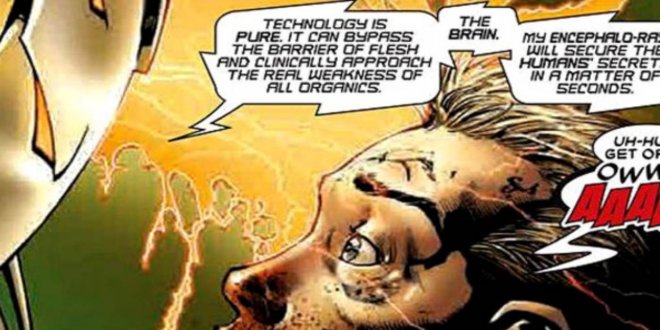 If there"s one Marvel villain with an undefined number of possibilities for powers, it"s Ultron. A computer program able to split his consciousness between multiple bodies, ironing out the details of the MCU Ultron"s powers is no easy thing to do. At the very least, his technomancy, army of drones, stockpile of weaponry, and vibranium body all make for an intimidating foe.
If there"s one Marvel villain with an undefined number of possibilities for powers, it"s Ultron. A computer program able to split his consciousness between multiple bodies, ironing out the details of the MCU Ultron"s powers is no easy thing to do. At the very least, his technomancy, army of drones, stockpile of weaponry, and vibranium body all make for an intimidating foe. There is one power particularly unique to Ultron that the Marvel Cinematic Universe sadly neglected, however; His signature ranged attack, the Encephalo-Ray. This unique energy beam sends human opponents into a sort of near-death coma upon being struck by it, evidence of Ultron"s staggering technological prowess. It would"ve been interesting to see such a device used in Avengers: Age of Ultron, though Scarlet Witch"s mind control fulfills a similar narrative niche in the story.
5 Organic Body Manipulation Cassandra Nova
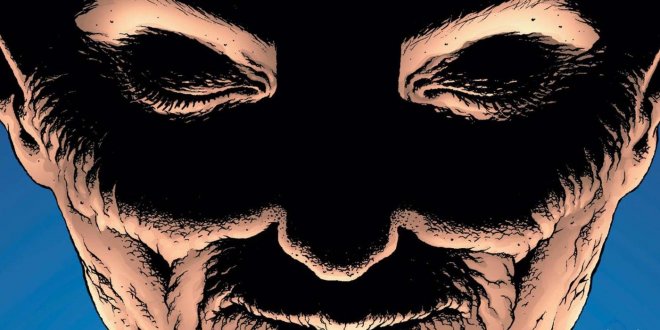 Of all the MCU"s villains, none were given quite as much free rein to use as many of their comic book powers as possible like Deadpool & Wolverine"s Cassandra Nova. The forgotten twin sister of Charles Xavier that somehow escaped the womb and survived as a bundle of cells before forming her own body, Cassandra Nova has many of Charles" same psychic gifts, on top of her own staggering mutant powers. Plenty of these are shown off in the movie, including telekinesis and a disturbing ability to phase her hands directly into the heads of others to read their mind.
Of all the MCU"s villains, none were given quite as much free rein to use as many of their comic book powers as possible like Deadpool & Wolverine"s Cassandra Nova. The forgotten twin sister of Charles Xavier that somehow escaped the womb and survived as a bundle of cells before forming her own body, Cassandra Nova has many of Charles" same psychic gifts, on top of her own staggering mutant powers. Plenty of these are shown off in the movie, including telekinesis and a disturbing ability to phase her hands directly into the heads of others to read their mind. Unfortunately, Deadpool & Wolverine didn"t have time to show off all of Cassandra Nova"s potential, leaving out powers like her penchant for manipulating her own body. In more or less complete control of her own genome, Nova is able to shapeshift herself at will, appearing as anyone she wants to and even mimick their speech well enough to bypass sensitive voice recognition software. It"s rare that Cassandra needs to make use of her shapeshifting, but it would"ve been a great way for Deadpool & Wolverine to squeeze in more cameos than it already does.
4 The Traditional Rings The Mandarin
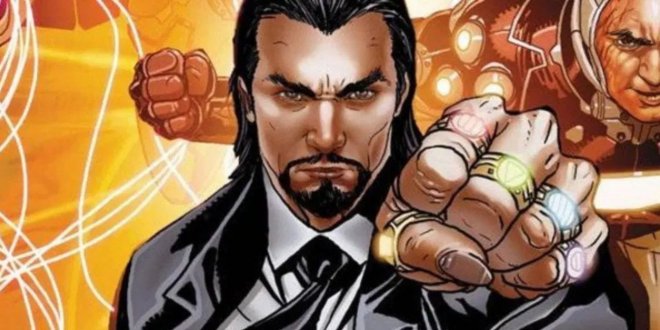 The Mandarin was another character to be quite re-invented by the Marvel Cinematic Universe. Though the concept of The Mandarin was first introduced in Iron Man 3, he doesn"t fully enter the picture himself until Shang-Chi and the Legend of the Ten Rings, which promised the appearance of the titular Rings of Power, The Mandarin"s signature magical weapons. However, the way the rings worked in the MCU is quite different from The Mandarin"s comic counterparts.
The Mandarin was another character to be quite re-invented by the Marvel Cinematic Universe. Though the concept of The Mandarin was first introduced in Iron Man 3, he doesn"t fully enter the picture himself until Shang-Chi and the Legend of the Ten Rings, which promised the appearance of the titular Rings of Power, The Mandarin"s signature magical weapons. However, the way the rings worked in the MCU is quite different from The Mandarin"s comic counterparts.In the film, the Rings of Power are a set of identical rings bound together by energy, typically worn on the wrists and forearms as they"re wide enough to do so. Meanwhile, The Mandarin"s rings in the comics are ten literal pieces of jewelry, each worn on one of his fingers. In addition to having their own semblance of sentience, each ring has its own name, and grants The Mandarin a different unique power. These powers include a frost ray, darkness generation, blasts of lighting, wind manipulation, and even psychic powers.
3 Slowed Aging Baron Zemo
 Despite his status as one of the Avengers most successful villains, Baron Zemo doesn"t have any actual powers to call his own. Seeking revenge for the deaths of his family, Zemo instead uses his powers of deception and manipulation in order to get the superhero team to destroy each other for him, essentially succeeding with the team fractured by the end of Captain America: Civil War. Dangerous though he may be, Zemo isn"t a threat in a physical fight, being more of a mastermind type of villain.
Despite his status as one of the Avengers most successful villains, Baron Zemo doesn"t have any actual powers to call his own. Seeking revenge for the deaths of his family, Zemo instead uses his powers of deception and manipulation in order to get the superhero team to destroy each other for him, essentially succeeding with the team fractured by the end of Captain America: Civil War. Dangerous though he may be, Zemo isn"t a threat in a physical fight, being more of a mastermind type of villain.This is mostly true in the comics as well, with one glaring exception. Thanks to a mysterious concoction known as the Compound X serum, also used by Zemo"s predecessor and father, Zemo is able to slow his aging to an indefinite degree, being functionally immortal as far as natural human death is concerned. This longevity allowed him to persist into the modern day as a villain despite being one of Captain America"s original foes in World War II before he went into the ice.
2 The Divine Symbiote Erik Killmonger
 For the most part, Killmonger is quite faithfully adapted into the MCU in terms of powers. Ingesting the mystical heart-shaped herb of Wakandan fame, expat Erik Killmonger gains all the same powers as T"Challa, The Black Panther, assuming his place as the ruler of the fictitious African nation. Following his death in the comics, Killmonger goes on quite an incredible journey of revival that gives him a unique new powerset.
For the most part, Killmonger is quite faithfully adapted into the MCU in terms of powers. Ingesting the mystical heart-shaped herb of Wakandan fame, expat Erik Killmonger gains all the same powers as T"Challa, The Black Panther, assuming his place as the ruler of the fictitious African nation. Following his death in the comics, Killmonger goes on quite an incredible journey of revival that gives him a unique new powerset.Similar to the likes of Venom or Carnage, Erik Killmonger becomes host to a parasitic symbiote in the comics, being brought back to life thanks to the intervention of the divine symbiote of former Emperor N"Jadaka. This experience gave Killmonger a sleek new costume that combined the likes of Venom and Black Panther, as well as a host of fantastical new abilities. These included shapeshifting, matter manipulation, magical portal creation, and the ability to raise an entire army of clones known as The Joined. It"d be fascinating to see the MCU revive Killmonger with this premise.
1 Expert-Level Cooking Skills Taskmaster
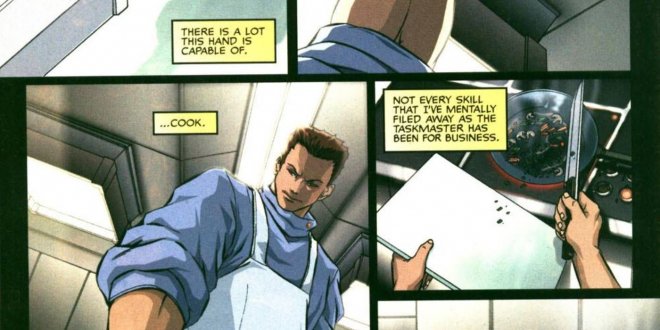 In the comics, Taskmaster is an entirely different character than the MCU"s version. Other than having similar powers of combat mimicry, the comics Taskmaster isn"t Antonia Dreykov, born of the Black Widow program. Instead, the identity of Taskmaster belongs to the wisecracking villain (and later anti-hero) Anthony Masters, whose natural affinity for photographic recall provides his powers rather than cybernetic enhancements a la the MCU version.
In the comics, Taskmaster is an entirely different character than the MCU"s version. Other than having similar powers of combat mimicry, the comics Taskmaster isn"t Antonia Dreykov, born of the Black Widow program. Instead, the identity of Taskmaster belongs to the wisecracking villain (and later anti-hero) Anthony Masters, whose natural affinity for photographic recall provides his powers rather than cybernetic enhancements a la the MCU version. Masters doesn"t only use his ability to unerringly mimic body movements just by seeing them for combat alone, indulging in his unique gifts for more trivial pursuits at times. One of these included some master-level cooking skills he was able to pick up simply by watching Food Network, using them to impress a date. It would be incredible to see more Marvel Cinematic Universe villains utilize their powers in more hilariously practical ways such as this.
Upcoming MCU Movies
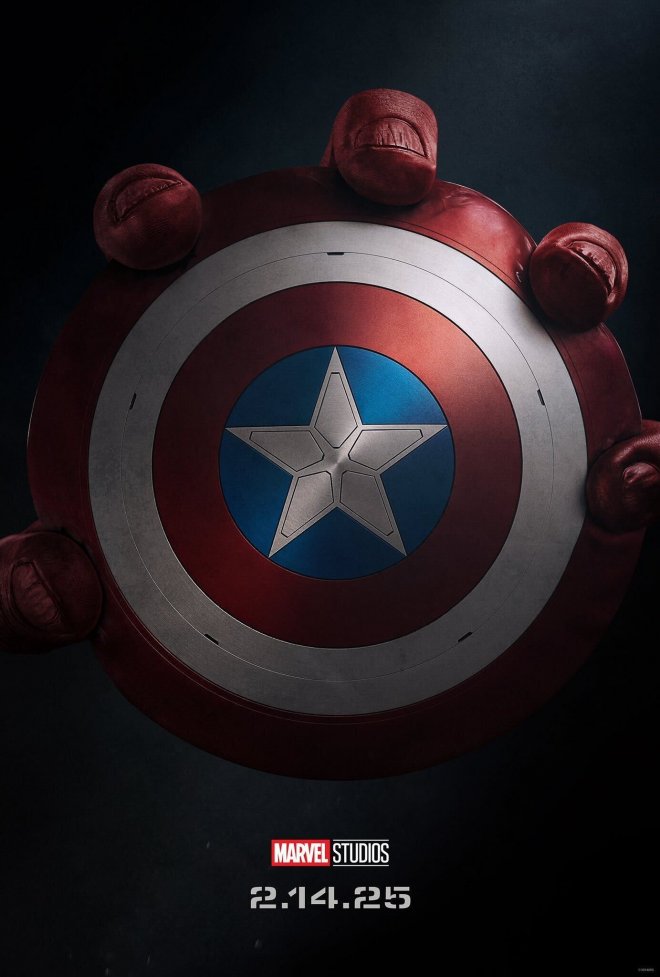 Captain America: Brave New World
Captain America: Brave New World Release Date February 14, 2025
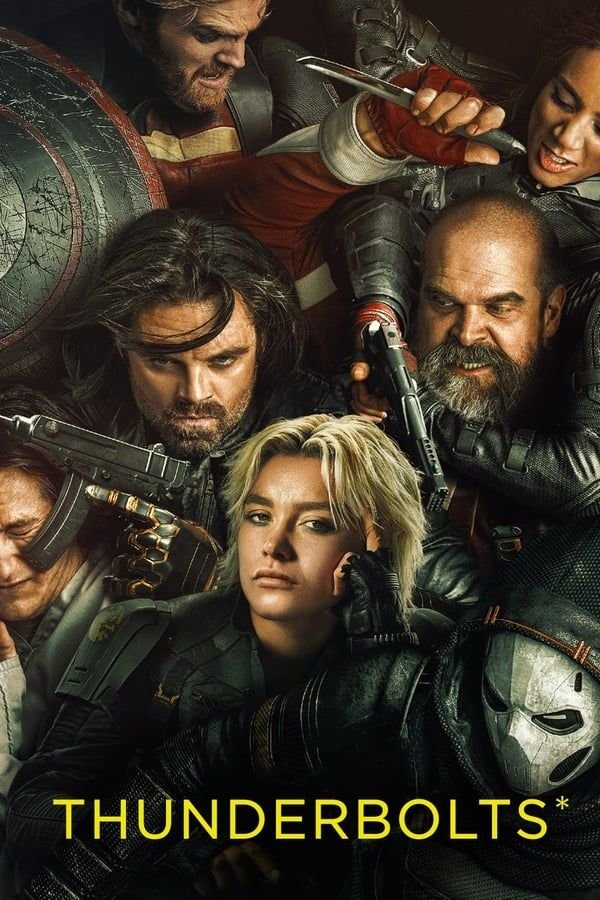 Thunderbolts*
Thunderbolts* Release Date May 2, 2025
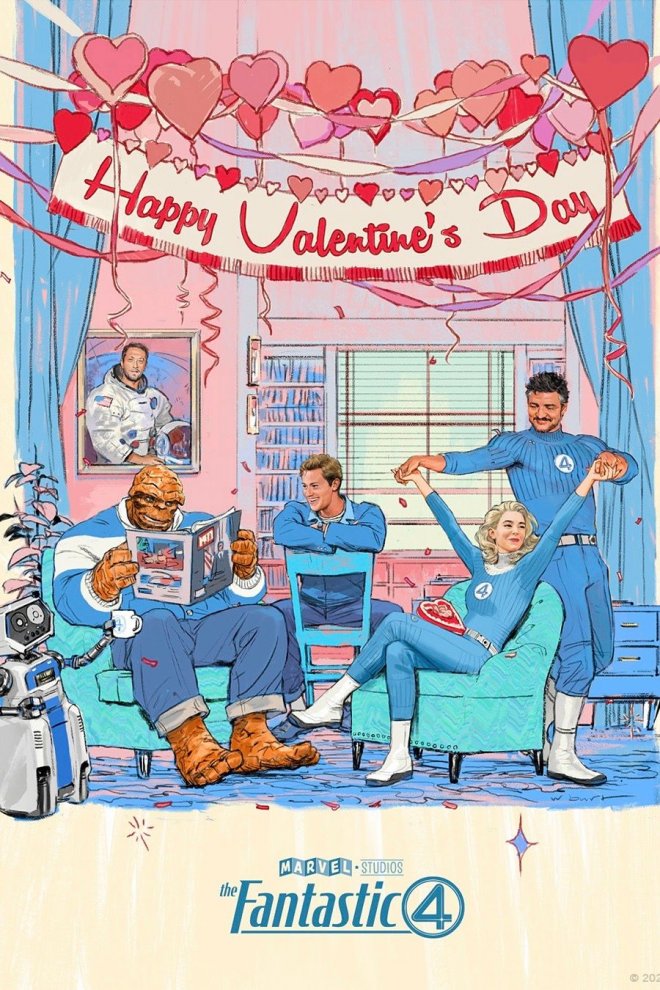 The Fantastic Four: First Steps (2025)
The Fantastic Four: First Steps (2025) Release Date July 25, 2025
 Blade (2025)
Blade (2025) Release Date November 7, 2025
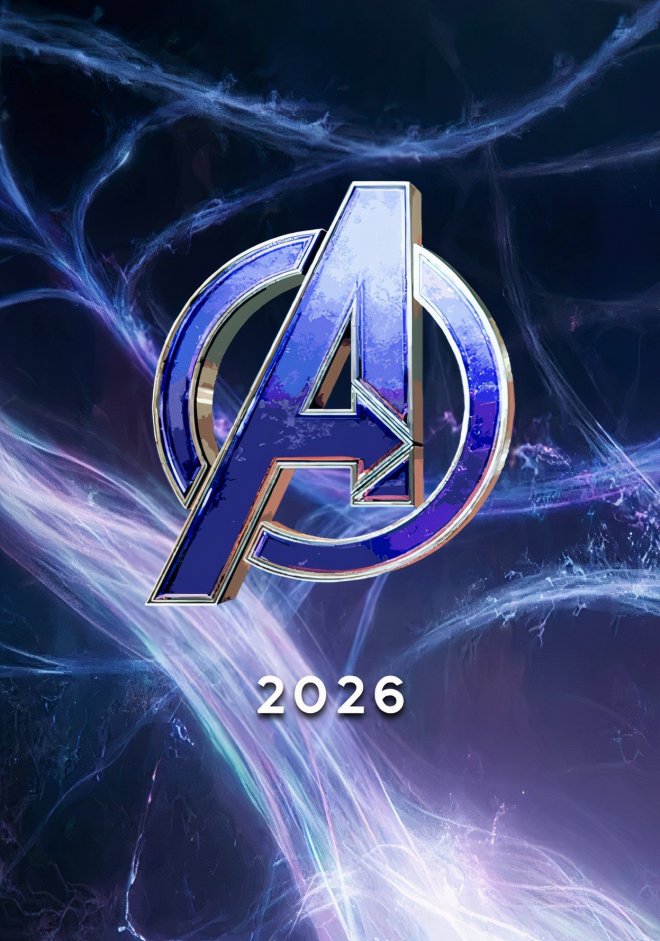 Avengers: Doomsday
Avengers: Doomsday Release Date May 1, 2026
 Avengers: Secret Wars
Avengers: Secret Wars Release Date May 7, 2027
[圖擷取自網路,如有疑問請私訊]
|
本篇 |
不想錯過? 請追蹤FB專頁! |
| 喜歡這篇嗎?快分享吧! |
相關文章
tag_marvel








